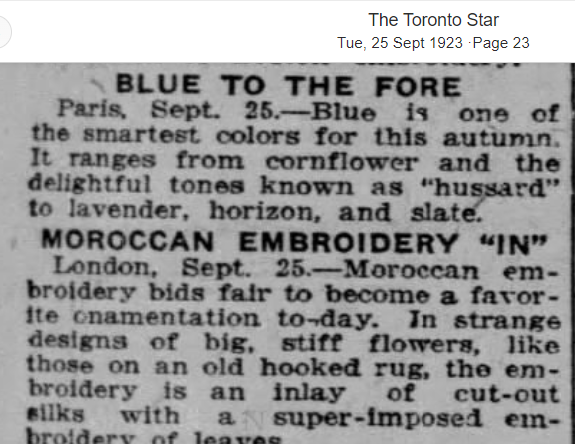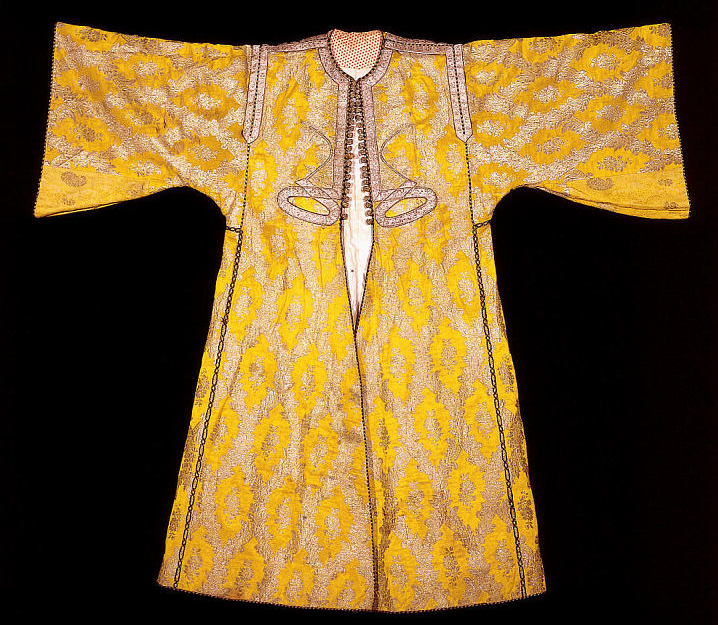Rooted in the vibrant tapestry of Moroccan history, the caftan stands as a testament to the country’s rich cultural heritage and artistic prowess. Tracing its origins back to the 12th-13th century Almohad dynasty, this iconic garment has evolved over the centuries, becoming a symbol of elegance, sophistication, and Moroccan identity.
In the French-Berber dictionary published in 1914, the caftan is defined as a garment typically made of silk, of Moroccan origin. (Page 55)

In the book « Descriptionary: A Thematic Dictionary » by Marc McCutcheon, « Caftan » is defined as « a full-length, robelike dress having embroidery around the neckline, a Moroccan design. » (Page 74)
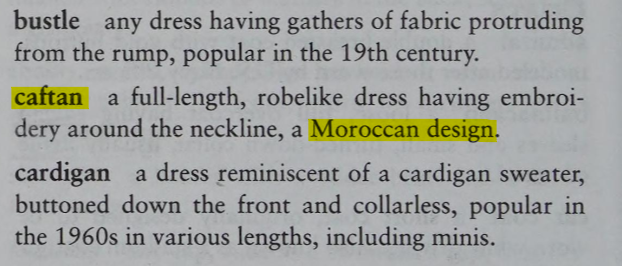
Below is a Moroccan caftan dating from the 18th century on the unesco website.
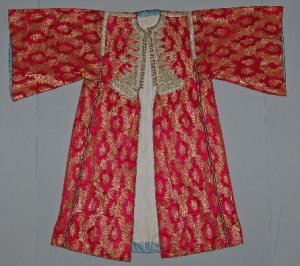
Emerging during a period of prosperity and artistic flourishing, the caftan quickly gained prominence as a garment of royalty and nobility. Its distinctive features, including its loose-fitting silhouette, long sleeves, and intricate frontal closure adorned with buttons or embroidery, set it apart as a masterpiece of Moroccan craftsmanship.

Crafted from sumptuous fabrics such as satin and silk, the caftan is a canvas for the artistry of Moroccan artisans. Lavish decorations, often featuring intricate patterns and vibrant colors, showcase the exceptional skills and creativity of these skilled individuals.
Initially reserved for the royal court and the elite, the caftan gradually permeated all levels of Moroccan society. Today, it is worn by women of all ages and backgrounds, serving as a versatile and elegant garment for both everyday wear and special occasions.
Recognizing its cultural significance, the caftan has been registered with the Islamic Educational, Scientific and Cultural Organization (ICESCO) as an ancestral Moroccan art. This prestigious recognition further cements the caftan’s position as an integral part of Morocco’s cultural heritage.
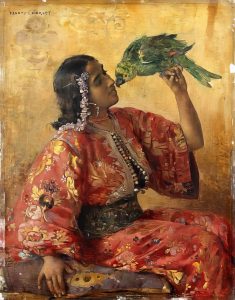
Beyond its historical significance, the caftan continues to be a cherished symbol of Moroccan identity. Its timeless elegance and versatility ensure its continued relevance in contemporary society, making it a treasured garment for generations to come.
To delve deeper into the rich history and artistry of the caftan, we journey to the captivating city of Fez, Morocco. A UNESCO World Heritage Site, Fez is renowned for its vibrant medina and its long-standing tradition of textile craftsmanship.

During the Almohad era, Fez served as a thriving hub for the textile industry, with over 3,000 weaving workshops scattered throughout its bustling quarters. The city’s skilled artisans produced exquisite textiles, including the sumptuous fabrics used to create caftans.
One of the most distinctive features of the caftan is its intricate embroidery, often featuring gold or silver thread. The art of embroidery in Fez, known as « Ntaa » or « Tarz Ntaa, » has its roots in the Almohad period.
Historical references, such as those found in the writings of Abi Qasim Baghdadi Tamimi (1005-1087). Baghdadi’s admiration for this art form is evident in his poem, where he celebrates the intricate details that adorned textiles such as carpets and garments.


Today, the caftan continues to be a source of pride and inspiration for Moroccans around the world. Its enduring popularity is a testament to its timeless design, its rich cultural heritage, and the exceptional craftsmanship of Moroccan artisans.
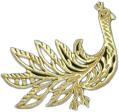
« During special occasions, such as allegiance ceremonies, congratulations, or participation in the holy war in Andalusia, the sultans of the Almohad dynasty in Morocco would offer gifts and clothing to the Arabs who settled in Morocco.
Types of gifts included: complete outfits consisting of turbans, outer robes, bernous, undergarments, and scarves.
Quantity of gifts: Each knight received an undergarment, turban, mantle, thin linen robe, and shirt.
Special gifts for elders and princes: Luxurious clothing comprising six pieces. »
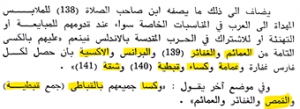
Moroccan embroidery has perennially captivated leading couturiers worldwide, spanning from Paul Poiret to Christian Dior, and from Balmain to Yves Saint Laurent…
